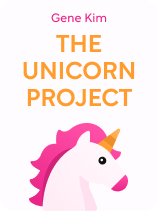

This article is an excerpt from the Shortform book guide to "The Unicorn Project" by Gene Kim. Shortform has the world's best summaries and analyses of books you should be reading.
Like this article? Sign up for a free trial here.
Is there a lack of autonomy in your workplace? Do you want to change the culture at the company where you work?
A company with little autonomy is a company that is likely going to fail. In The Unicorn Project, Gene Kim demonstrates how a lack of employee autonomy in the workplace almost destroyed a department, until employees started taking matters into their own hands.
Keep reading to learn how to take back autonomy at work.
Be a Rebel at Work
Kim’s narrative follows the story of Maxine Chambers, a lead developer in Parts Unlimited’s software development department within IT. Through Maxine’s eyes, Kim illustrates the characteristics of both unproductive and healthy workplace cultures, with an emphasis on how the former can be turned into the latter. In the story, Maxine goes from the frustration of being part of an ineffective department to joining a group of company rebels who secretly work to institute better practices and autonomy in the workplace, eventually setting an example for the rest of the company to follow.
Our story begins as Maxine finds out she’s been unjustly blamed for a payroll system failure. As punishment, she’s exiled to work on an online sales tool called the Phoenix Project that everyone in IT despises. Though management considers the Phoenix Project essential to dragging Parts Unlimited into the digital age, it’s been stuck in development hell for years. When Maxine arrives at her new workplace, the situation is even worse than she’d imagined.
The Phoenix Project office is a dismal cube farm where developers work in isolation from each other. The culture is one in which there’s no feedback, no visible progress, and no risks taken to foster innovation because people fear they’ll be punished if something goes wrong. While programmers develop separate Phoenix features, there’s no standard environment for developers to work in, no way to test the code they write, and no Phoenix documentation to help newcomers begin. Maxine’s initial task is to write that documentation, but she finds it impossible to even install a pre-release version of Phoenix on her laptop.
The disruption caused by the Phoenix Project meltdown creates an opening for the rebels to expand their operations. By formalizing their behind-the-scenes network, Kurt and Maxine merge the functions of different departments to create a cycle of feedback and progress. They do this by self-organizing into a new team, tackling a system bottleneck that’s slowing Phoenix down, and eventually detaching that bottleneck from the Phoenix software altogether.
While IT scrambles to keep Phoenix working, Kurt lobbies for Maxine and the rebels to become a new product development team that incorporates testing into the development process instead of waiting to do it after the fact. This bypasses the complicated ticketing system that ostensibly lets IT track progress but, in practice, prevents work by segregating the steps of software creation between multiple departments. It’s a risky move to short-circuit Parts Unlimited’s bureaucracy that, if it fails, could get them all fired.
(Shortform note: While Kim presents the rebels’ actions as a daring step in the right direction, there are dangers inherent to circumventing a system’s hierarchical structure. In Thinking in Systems, Donella H. Meadows warns that if a subgroup such as Kurt’s rebellion optimizes work for its own needs and neglects the larger organization—such as by taking resources away from other teams—the organization as a whole could fail. In a healthy system, Meadows suggests that the hierarchy should be structured to improve the work of smaller teams and help them coordinate instead of pitting them against each other as in the case of Parts Unlimited.)
Maxine’s first mission is to salvage Data Hub, a patched-together legacy system that Phoenix relies on to pull customer and product information from separate databases spread throughout the network. Data Hub is slow and antiquated, but so many of the company’s systems run through it that replacing it would be a logistical nightmare. Though its deficiencies are a major bottleneck preventing Phoenix from working, Kim writes that upgrading and maintaining Data Hub has never received support from on high because management gives apps and features higher value than the underlying systems that support them.
(Shortform note: A “legacy system” such as Data Hub is an outdated hardware or software platform that’s still used by an organization because of the cost and difficulty of changing to something new. For example, if a retail company’s sales software was designed to run solely on Windows NT, and if the software’s vendor went out of business without designing an upgrade, the retail company may find itself trapped into maintaining an old Windows NT server to keep its sales operations running. Businesses often retain legacy systems because of the prohibitive cost in time, money, and planning required to upgrade across an entire organization.)
Kurt’s rebels make it a priority to create a working environment that developers can use to test their changes to Data Hub. This new, slimmed-down test environment spreads through the rest of Dev and QA, whose members start working in conjunction with each other. They even rearrange their cubicles so developers and testers can work side by side, providing rapid feedback and speeding up their progress. Kim illustrates that it’s not just efficiency that improves—team members start taking joy in their work.
(Shortform note: Self-organization, such as with Kurt’s rebels, may be more than just a useful team structure. According to business expert Frederic Laloux, self-organizing teams represent a fundamental change in how businesses and society itself may organize in the future. In Reinventing Organizations, he argues that by replacing the rules of hierarchical structure with the assumption that individuals and teams can make good decisions on their own, a business can unlock its workers’ full potential for creativity and problem-solving, especially if they’re invested in a culture that promotes the well-being of the business as a whole.)
Unicorn Is Born
While she untangles the Data Hub’s problems, Maxine starts to wonder which Data Hub activities are most important for the business itself. She discovers a backlog of expired tickets to create seasonal sales promotions. The slow Data Hub has been the bottleneck for these promotions, which took months to implement in the old system and were meant to be a feature in Phoenix. Using the rebels’ new workflow, Maxine and her colleagues can detach some Data Hub functions from Phoenix and create the seasonal promotions independently.
(Shortform note: In The Goal, Eliyahu M. Goldratt writes that bottlenecks like Data Hub negate improvements made elsewhere along the production line. If an improvement is made to a station or process somewhere ahead of the bottleneck, it’ll merely result in a larger pileup of work at the bottleneck, whereas any improvements downstream of the bottleneck will simply result in workers sitting idle. Goldratt’s solutions to the bottleneck problem include improving the functionality of the bottleneck, optimizing the whole system to make the best use of the bottleneck’s capacity, or diverting work around the bottleneck altogether, which Maxine accomplishes by detaching Data Hub’s functions from Phoenix.)
There’s one catch. To deploy the promotions in time for the Christmas shopping season, Maxine and Kurt need executive approval. In the past, this would have required a review board that would have taken months to discuss it. Instead, the rebels appeal directly to the CEO. Since the company’s profits are on the line, he approves their request to design and deploy software outside the regular channels. Maxine’s seasonal promotions project is given the codename Unicorn, and Kim writes that the CEO will use Unicorn’s success to judge the rebels’ new model of work.
(Shortform note: When Parts Unlimited’s CEO gives the go-ahead to Maxine’s project, he’s recognizing the value of autonomy and flexibility espoused by Aaron Dignan in Brave New Work. Granting autonomy requires that leaders trust their employees to make reasonable decisions for their business, and granting that trust inspires workers to rise to the challenge set by their leader’s expectations. Allowing flexibility in the organization enables it to change with the times, experiment with new strategies, and do away with old procedures and routines that no longer serve the company’s greater good.)

———End of Preview———
Like what you just read? Read the rest of the world's best book summary and analysis of Gene Kim's "The Unicorn Project" at Shortform.
Here's what you'll find in our full The Unicorn Project summary:
- Why the work of IT services must align with a company's goals
- How an IT department can turn itself around after failure
- The three pillars of IT management: workflow, feedback, and constant improvement






